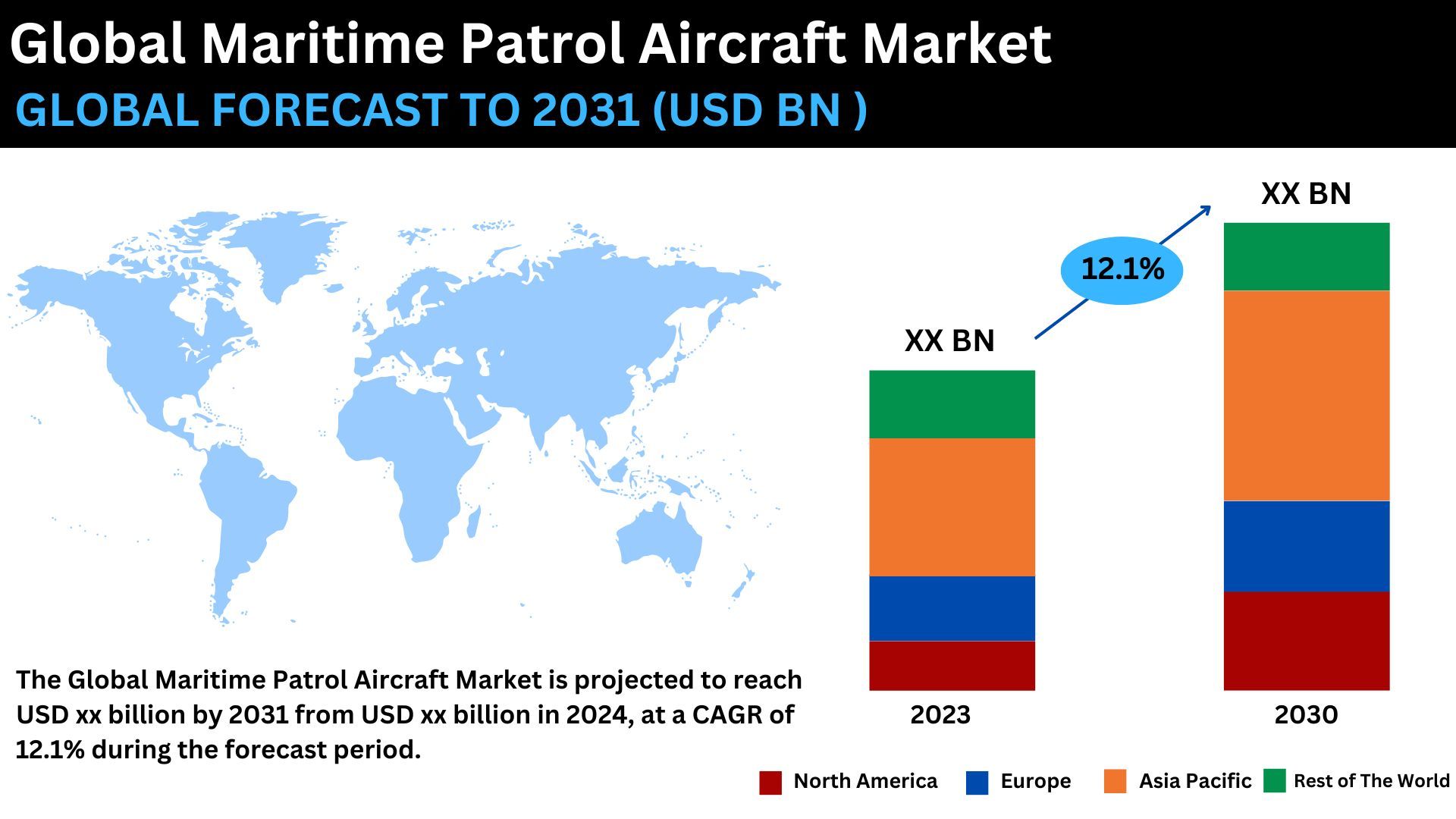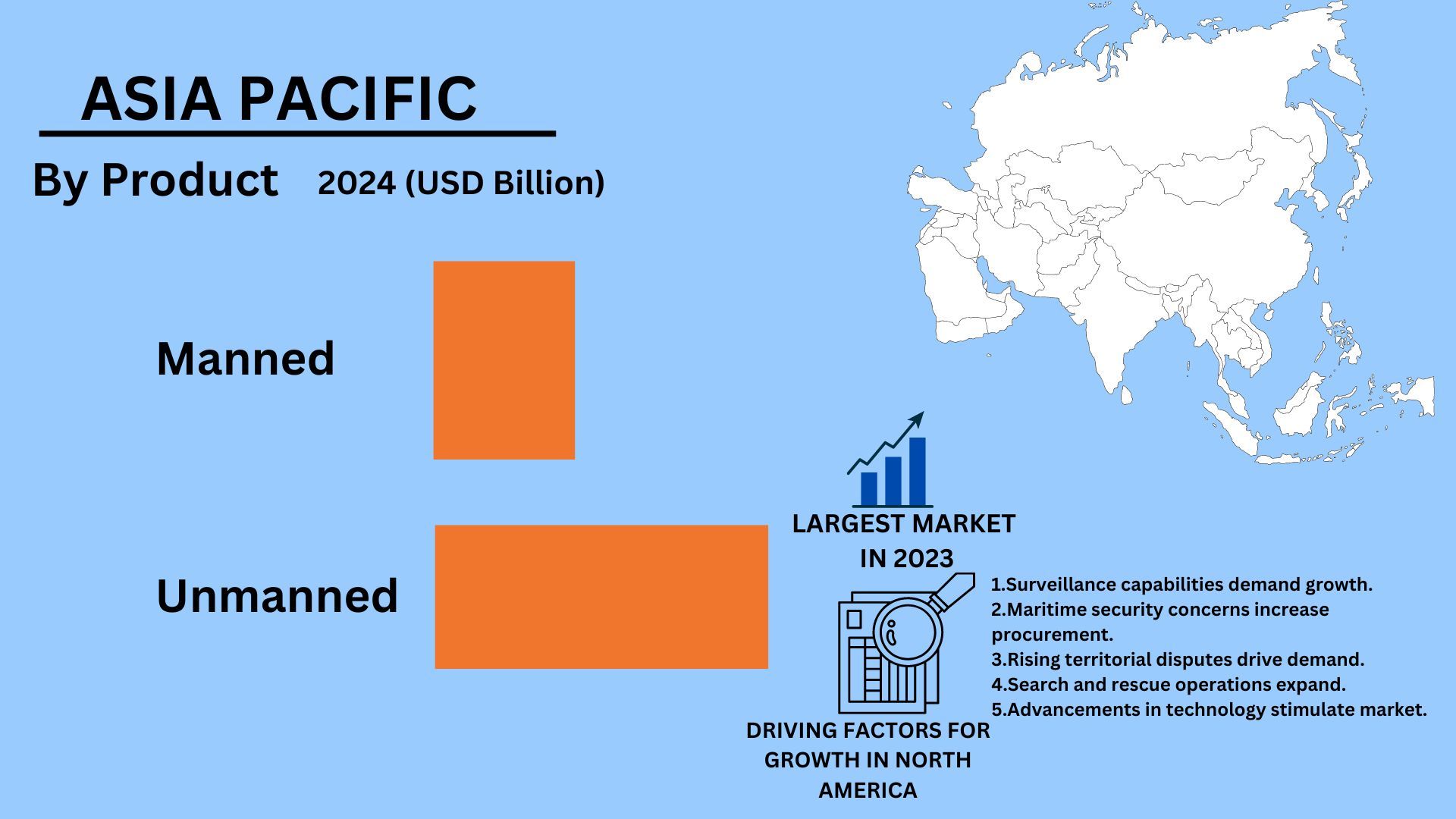Global Maritime Patrol Aircraft Market
EMI10107 ID | Aerospace & Defence | March-2024 | 214 PagesFrom 2024 to 2031, the Global Maritime Patrol Aircraft Market is expected to develop at a compound annual growth rate (CAGR) of 12.1%, with sales expected to reach USD XX billion.

The Maritime Patrol Aircraft (MPA) market comprises the worldwide industry that produces, distributes, and uses specialized aircraft meant for maritime reconnaissance, anti-submarine warfare, and surveillance. These aircraft are equipped with state-of-the-art sensors, radars, and communication systems that enable them to detect and track surface ships, submarines, and other maritime dangers across large oceanic stretches. The market offers services to armed forces and government agencies tasked with defending maritime interests, guarding shipping lanes, combating piracy, and conducting search and rescue operations. The continued evolution of the MPA market is being driven by the challenges of maritime security, the necessity for diverse marine surveillance capabilities, and the growing emphasis on maritime domain awareness.
Market Dynamics for Maritime Patrol Aircraft
Drivers: The need for enhanced monitoring capabilities is fueled by growing concerns about maritime security.
Sophisticated monitoring technology are becoming more and more in demand as worries about marine security rise. To safeguard their coastal borders, shipping lanes, and offshore assets, governments and organizations are investing in enhanced surveillance capabilities in response to the evolving threats to the maritime domain, such as terrorism, smuggling, and piracy. In order to protect marine operations and guarantee the security of ships, personnel, and cargo, this trend emphasizes the significance of real-time monitoring, intelligence collection, and quick reaction systems.
Restraints: Exorbitant upfront procurement and operating costs prevent market penetration.
Significant obstacles prevent market penetration, such as high initial procurement prices and operating expenses. The large initial outlay needed can put off potential customers, and continuing operating expenses might put a pressure on finances. These factors prevent the product from being widely adopted and prevent the market from expanding. Strategies such as providing financing choices, lowering manufacturing costs through innovation, or putting in place efficiency measures to minimize operating expenditures should be investigated in order to increase penetration and make products more appealing and accessible to customers.
Opportunities: Industry participants may benefit greatly from modernization initiatives in naval forces around the globe.
Global naval modernization initiatives provide profitable prospects for industry participants. The need for cutting-edge ships, equipment, and communication systems is growing as countries modernize their fleets to preserve their maritime dominance and respond to changing security threats. Contracts and collaborations can be advantageous for companies that specialize in naval infrastructure, defense electronics, and shipbuilding. Government and private sector cooperation will spur innovation in naval capabilities as technology develops, providing significant development opportunities for the military sector.
Challenges: In order to remain competitive, quick advances in technology demand ongoing investment in research and development.
To remain competitive in the quickly changing sector of technology, ongoing investment in research and development (R&D) is required. Fast advancements spur innovation and drive companies to constantly adapt their products and services to meet changing customer demands. By allocating resources towards research and development initiatives and using state-of-the-art technology, organisations may maintain their competitive advantage. This thoughtful investment not only guarantees market relevance but also fosters long-term sustainability and growth in an increasingly dynamic environment.

Global Maritime Patrol Aircraft Market Ecosystem
Prominent firms in this industry include Maritime Patrol Aircraft market-leading manufacturers and service suppliers. These businesses have been on the market for a while and have a strong worldwide sales and marketing network, as well as a broad product portfolio, organic and inorganic strategies. Several well-known corporations are Thales Group, RUAG Group, Leonardo S.p.A., BAE Systems plc, Dassault Aviation, Saab AB, Embraer S.A., Boeing, Airbus S.A.S., Textron Inc., and Others.
Market Report Scope for Maritime Patrol Aircraft:
| Report Metric | Details |
|---|---|
| Market Size (Years) | 2020–2031 |
| Base Year Considered | 2023 |
| Forecast Period | 2024–2031 |
| Forecast Units | Million/Billion (USD) |
| Segments Covered | By Type, Propulsion System, Application, Mode of Operation, and Region |
| Geographies Covered | North America, Europe, Asia Pacific, and Rest of the World |
| Companies Covered | Dassault Aviation, Saab AB, Embraer S.A., BAE Systems plc, Leonardo S.p.A, Thales Group, RUAG Group, Boeing, Airbus S.A.S, Textron Inc, and Others |
